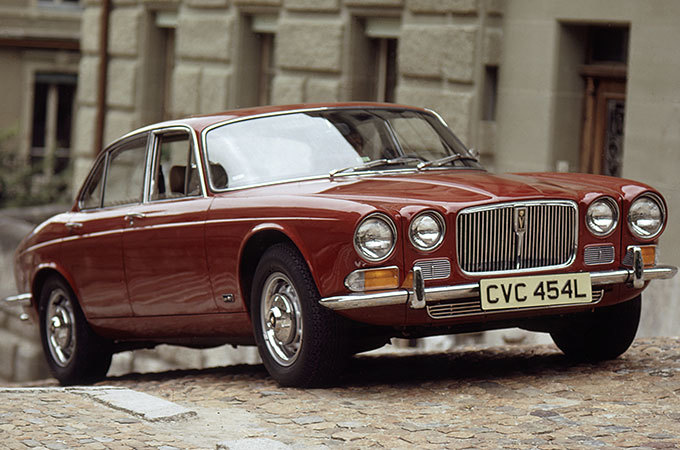After 50 years of making their flagship Sedan, Jaguar is celebrating half a century of tradition with the launch of the Jaguar XJ50. On this limited edition, a passenger will note unique front and rear bumpers, as well as ‘purposeful’ 20-inch wheels with Gloss Black Diamond Turned Finish. Unique badging arms the rear and side vents, to accent four striking paint options include Fuji White, Santorini Black, Loire Blue, and Rosello Red.
The XJ50 remains true to its Jaguar core, representing the heritage of the XJ Sedan with a “balance of design, intelligent performance, and indulgent luxury”- according to Ian Callum, Jaguar Director of Design. It’s a cornerstone of Jaguar design and it’s a model worth celebrating. Below we travel back to the beginning of the XJ legacy at the Paris Motor Show, to see what lead to the creation of a limited edition XJ.
The debut of the XJ

1968 marks the year the Jaguar XJ debuted as an ‘eXperimental’ project for the luxury manufacturer at the Paris Motor show, and later named ‘Car of the Year’ by Car Magazine. Jaguars of the late 60’s, including the XJ6 Series 1, were marked with a low seat back because Sir Williams Lyons insisted that the top of the seats should never be seen above the belt line. This feature specification disappeared in the coming years, but still represented Lyons’ forward thinking mentality with Jaguar and specifically, the XJ.

Series 2 Launches
The Series 2 launched in 1973 at the Frankfurt Motor Show. While reminiscent of its predecessor, Jaguar now also offered the XJ in an exciting two-door coupe design. The designers took five years of learnings to implement key changes like a long, more luxurious wheelbase in the sedan versions, reserving the short wheelbase for the Coupe. Come 1977, the coupe was discontinued after reaching just over 10,000 units in completed production.
A Classic Update

When it was almost time for a Series 3 model to launch, Jaguar looked outside their design circle for the restyling. The famous Italian house of Pininfarina delivered a classic update that brought instant acclaim to the Series 3. A new vertical bar radiator grille, a new roof, new door handles, and improvements to the interior helped propel the redesigned XJ to one of Jaguar’s most successful models.
February 1985
Despite retiring in 1972, the co-founder of Jaguar still maintained his presence in the styling studio. The last vehicle he had any influence over was the XJ40, which unmistakably resembled the ‘80s in its styling and featured a new rear suspension with double wishbones. Sir William Lyons, known as ‘Mr. Jaguar,’ passed away in his home in 1985.
Softer Shapes and Four Headlamps
In the early 1990s, the XJ40 was redesigned into the X300, which sported softer shapes and rounded headlamps on the front end- a trend starting to make its way back in the 90s. In 1994, the revised XJ6 went on sale and the curved headlamps made another welcome appearance.
Redefining Automobile History
When the new millennium hit, Jaguar braced for a fresh start producing XJ’s that looked and handled exceptionally well. The 2002 XJ was a first for the auto industry, inciting revolution by having most of the 2002 model’s parts made from aluminum. This resulted in lighter, stronger, and more agile vehicle serving up a dynamic driving experience.
50 Years later:
After years of redesigns and Jaguar XJ vision, 2018 still proves to welcome the likes of the XJ to the luxury market. The limited edition XJ-50 is a fitting tribute to the legacy and performance spanning over five decades of the Jaguar brand.

For more information on the history of the XJ, click here: https://www.jaguar.co.uk/about-jaguar/jaguar-stories/xj-heritage.html


